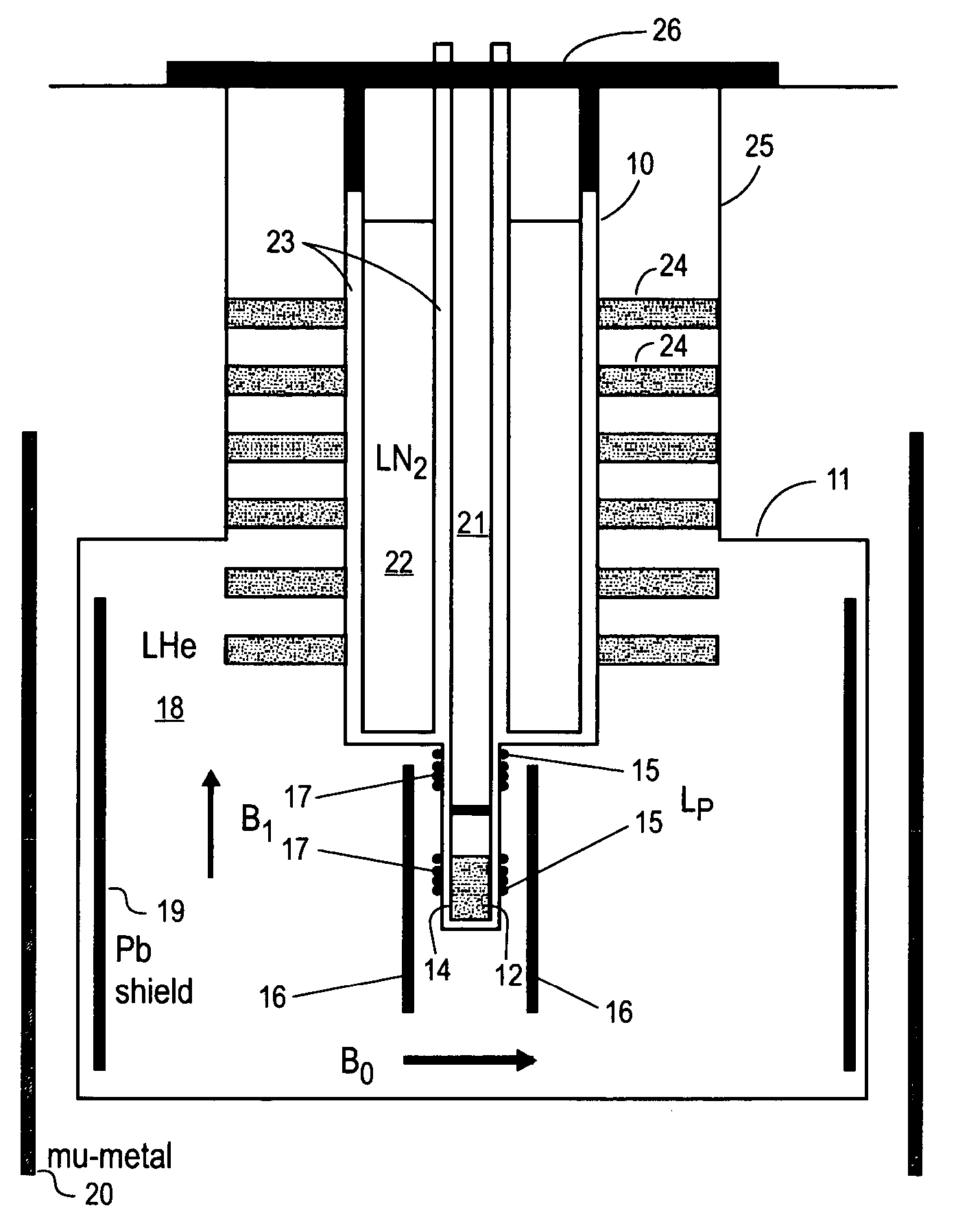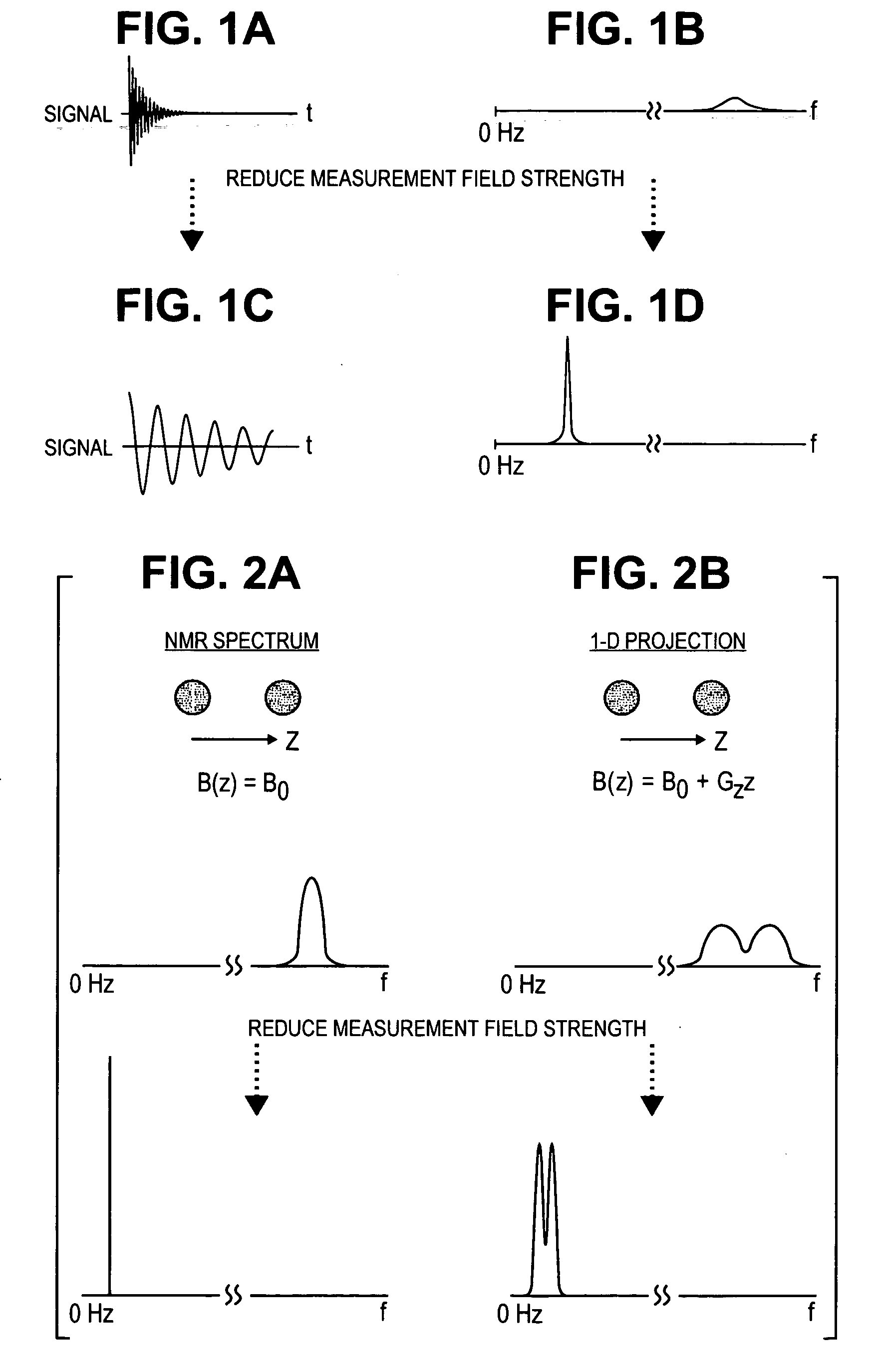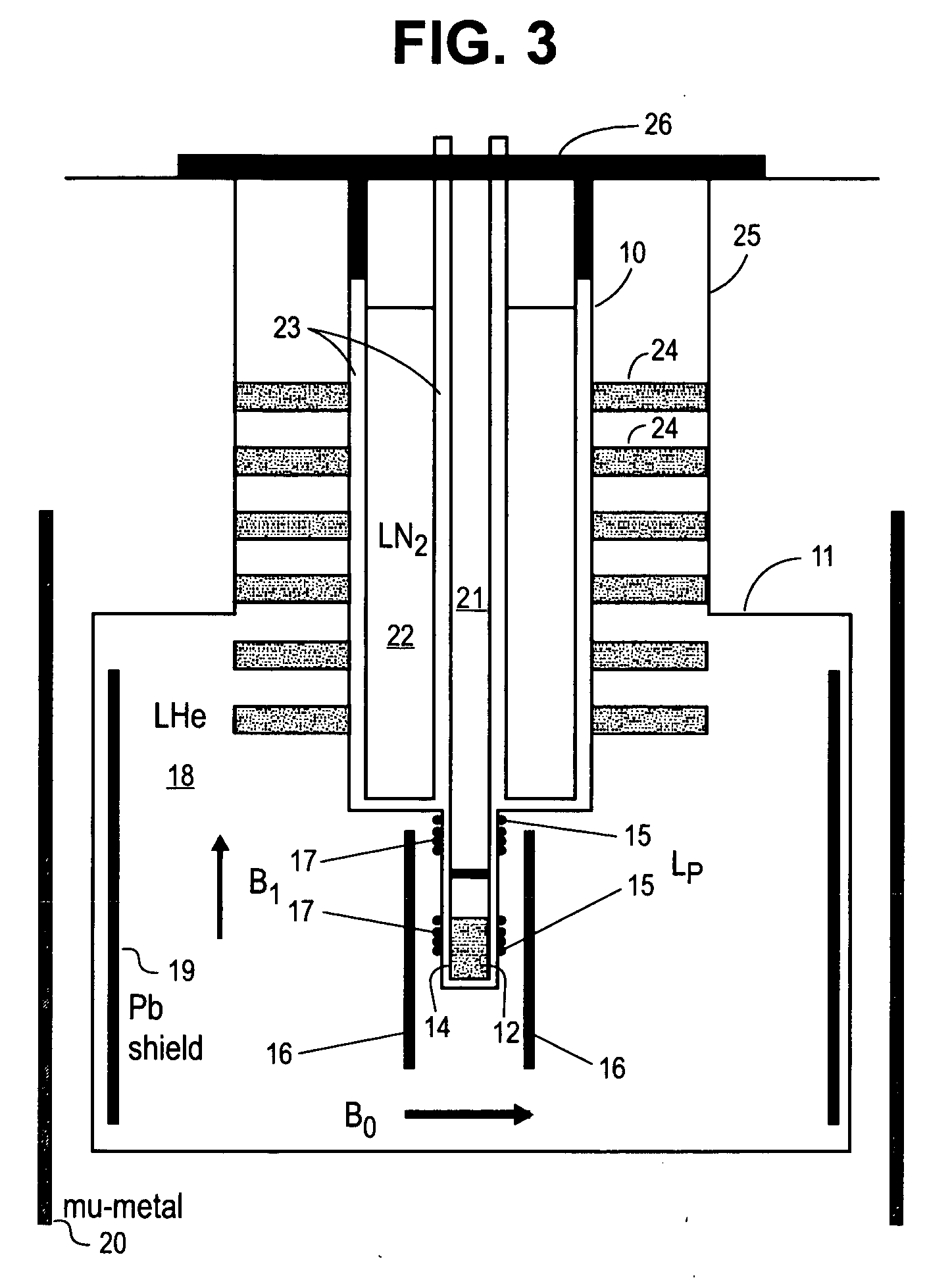Squid detected NMR and MRI at ultralow fields
a technology of ultralow field and detection field, which is applied in the field of squid detection nmr and mri at ultralow magnetic field, can solve the problems of inability to operate such a machine, inability to detect high-field imaging, and inevitable drawback of high-field imaging is the susceptibility artifact, so as to enhance both snr and spectral resolution, reduce signal bandwidth, and enhance the strength of measurement field
- Summary
- Abstract
- Description
- Claims
- Application Information
AI Technical Summary
Benefits of technology
Problems solved by technology
Method used
Image
Examples
Embodiment Construction
[0037] The invention is directed to certain improvements in NMR / MRI as described herein; other aspects of the NMR / MRI systems are conventional and not described since they are well known in the art.
[0038] A. Concept of Microtesla Field NMR
[0039] Line broadening due to field inhomogeneity is a major liability in liquid-state NMR. Spectral resolution, and therefore the information which one can extract about the interaction of nuclei with the local electromagnetic environment, is ultimately determined by the width of the NMR lines: it is necessary that the strength of the interactions exceed the dispersion of Larmor frequencies in the sample. Moreover, for a fixed sample magnetization, the SNR achieved from a single FID or spin echo signal scales inversely with the inhomogeneously broadened width of the NMR line. For these reasons, high-resolution liquid state NMR requires exquisite field homogeneity. In a conventional high-field spectrometer, homogeneity is attained by supplementin...
PUM
 Login to View More
Login to View More Abstract
Description
Claims
Application Information
 Login to View More
Login to View More - R&D
- Intellectual Property
- Life Sciences
- Materials
- Tech Scout
- Unparalleled Data Quality
- Higher Quality Content
- 60% Fewer Hallucinations
Browse by: Latest US Patents, China's latest patents, Technical Efficacy Thesaurus, Application Domain, Technology Topic, Popular Technical Reports.
© 2025 PatSnap. All rights reserved.Legal|Privacy policy|Modern Slavery Act Transparency Statement|Sitemap|About US| Contact US: help@patsnap.com



